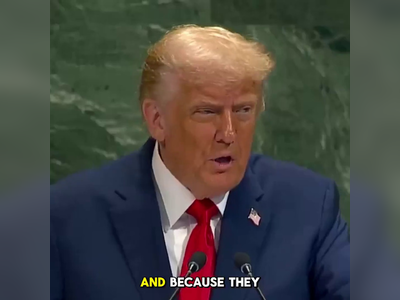
Italy's Healthcare System Faces Costly Reliance on Independent Contractors
A rising trend in public healthcare spending as hospitals turn to freelance doctors amidst a critical workforce shortage, prompting new government reforms.
Italy's public healthcare sector is grappling with a burgeoning expenditure nearing one billion euros annually for the services of so-called 'gettonisti'—contracted freelance doctors.
This expense, estimated at nearly double between 2022 and 2023, highlights the increasing reliance on external medical professionals supplied by cooperatives as a response to severe personnel shortages in hospitals.
According to Pierino Di Silverio, leader of Anaao, the principal medical union, the cost to settle these services by regional entities is expected to persist, if not increase, through 2024.
Without these contractors, many healthcare facilities would struggle to maintain operational levels.
This trend is driven partly by doctors resigning from permanent hospital roles in favor of more lucrative freelance opportunities, where they can earn up to 30% more, accompanied by better working conditions.
The Italian government, under Prime Minister Giorgia Meloni, is addressing these inefficiencies with legislative changes aimed at curbing wasteful spending and addressing long-standing organizational challenges within the national health system.
The public healthcare sector suffers from a shortage of 15,000 doctors and over 60,000 nurses, compounded by factors such as the numerus clausus—an enrollment cap in medical schools—accelerated workloads post-COVID, budget cuts and turnover freezes implemented in the 2000s, and a slow wage progression.
In 2023 alone, 5,000 doctors resigned from public hospital positions across Italy, a significant increase from the 3,600 departures in the previous year.
Simultaneously, a third of the scholarships intended to support medical specialization went unclaimed.
The root causes of this situation include a tenfold increase in the number of doctors opting out of the national health service over the past five years.
Research by the National Anti-Corruption Authority (ANAC) indicates that between 2019 and 2022, regions spent nearly 1.7 billion euros on outsourced medical services, dominated by around 30 cooperatives, with a small number cornering the market in key regions like Lombardy, Piedmont, Abruzzo, and Veneto.
The expenditure on these services is equivalent to 2.5% of the total budget for national health personnel, a seemingly small figure that nonetheless represents a significant sum that, as Di Silverio notes, could otherwise support the hiring of 25,000 additional medical professionals.
Nino Cartabellotta, president of the Gimbe Foundation, highlighted this issue during a session with the Parliamentary Social Affairs Committee.
He noted that over the past 11 years, there has been a 28-billion-euro reduction in spending on healthcare employees, while expenses for 'gettonisti' doubled in the reported period.
In response, Health Minister Orazio Schillaci is advocating for increased wages for hospital physicians.
From 2025, the use of freelance contractors will be restricted to 'urgent and necessary' circumstances, with capped hourly rates for doctors and nurses.
Regions like Emilia Romagna, Tuscany, Lombardy, and Lazio are pioneering localized solutions to alleviate immediate pressures and enhance workforce stability.
These initiatives represent a critical effort to restore sustainability in Italy's healthcare sector, whose challenges echo broader trends of workforce strains in public health systems globally.
This expense, estimated at nearly double between 2022 and 2023, highlights the increasing reliance on external medical professionals supplied by cooperatives as a response to severe personnel shortages in hospitals.
According to Pierino Di Silverio, leader of Anaao, the principal medical union, the cost to settle these services by regional entities is expected to persist, if not increase, through 2024.
Without these contractors, many healthcare facilities would struggle to maintain operational levels.
This trend is driven partly by doctors resigning from permanent hospital roles in favor of more lucrative freelance opportunities, where they can earn up to 30% more, accompanied by better working conditions.
The Italian government, under Prime Minister Giorgia Meloni, is addressing these inefficiencies with legislative changes aimed at curbing wasteful spending and addressing long-standing organizational challenges within the national health system.
The public healthcare sector suffers from a shortage of 15,000 doctors and over 60,000 nurses, compounded by factors such as the numerus clausus—an enrollment cap in medical schools—accelerated workloads post-COVID, budget cuts and turnover freezes implemented in the 2000s, and a slow wage progression.
In 2023 alone, 5,000 doctors resigned from public hospital positions across Italy, a significant increase from the 3,600 departures in the previous year.
Simultaneously, a third of the scholarships intended to support medical specialization went unclaimed.
The root causes of this situation include a tenfold increase in the number of doctors opting out of the national health service over the past five years.
Research by the National Anti-Corruption Authority (ANAC) indicates that between 2019 and 2022, regions spent nearly 1.7 billion euros on outsourced medical services, dominated by around 30 cooperatives, with a small number cornering the market in key regions like Lombardy, Piedmont, Abruzzo, and Veneto.
The expenditure on these services is equivalent to 2.5% of the total budget for national health personnel, a seemingly small figure that nonetheless represents a significant sum that, as Di Silverio notes, could otherwise support the hiring of 25,000 additional medical professionals.
Nino Cartabellotta, president of the Gimbe Foundation, highlighted this issue during a session with the Parliamentary Social Affairs Committee.
He noted that over the past 11 years, there has been a 28-billion-euro reduction in spending on healthcare employees, while expenses for 'gettonisti' doubled in the reported period.
In response, Health Minister Orazio Schillaci is advocating for increased wages for hospital physicians.
From 2025, the use of freelance contractors will be restricted to 'urgent and necessary' circumstances, with capped hourly rates for doctors and nurses.
Regions like Emilia Romagna, Tuscany, Lombardy, and Lazio are pioneering localized solutions to alleviate immediate pressures and enhance workforce stability.
These initiatives represent a critical effort to restore sustainability in Italy's healthcare sector, whose challenges echo broader trends of workforce strains in public health systems globally.
Translation:
Translated by AI
AI Disclaimer: An advanced artificial intelligence (AI) system generated the content of this page on its own. This innovative technology conducts extensive research from a variety of reliable sources, performs rigorous fact-checking and verification, cleans up and balances biased or manipulated content, and presents a minimal factual summary that is just enough yet essential for you to function as an informed and educated citizen. Please keep in mind, however, that this system is an evolving technology, and as a result, the article may contain accidental inaccuracies or errors. We urge you to help us improve our site by reporting any inaccuracies you find using the "Contact Us" link at the bottom of this page. Your helpful feedback helps us improve our system and deliver more precise content. When you find an article of interest here, please look for the full and extensive coverage of this topic in traditional news sources, as they are written by professional journalists that we try to support, not replace. We appreciate your understanding and assistance.











